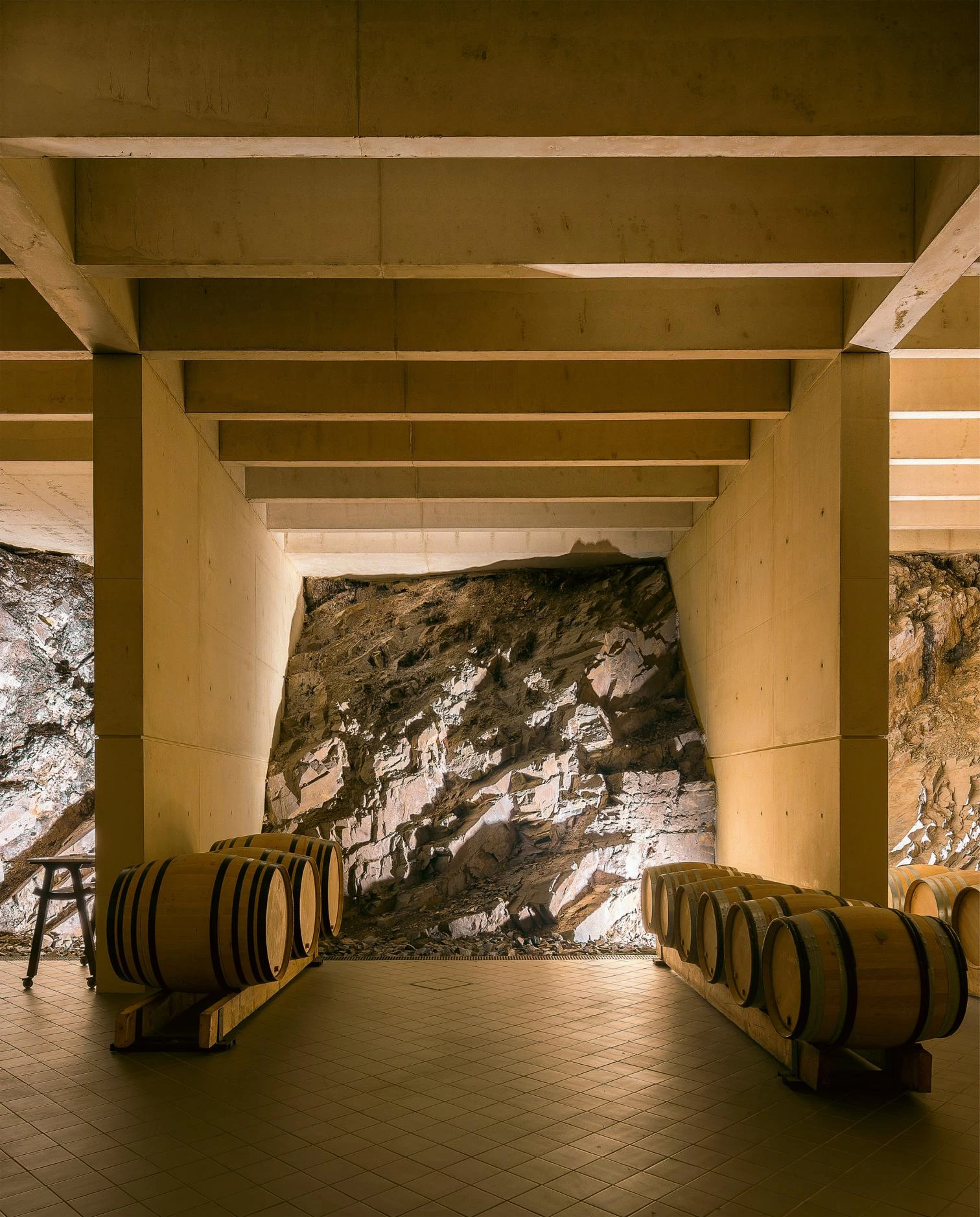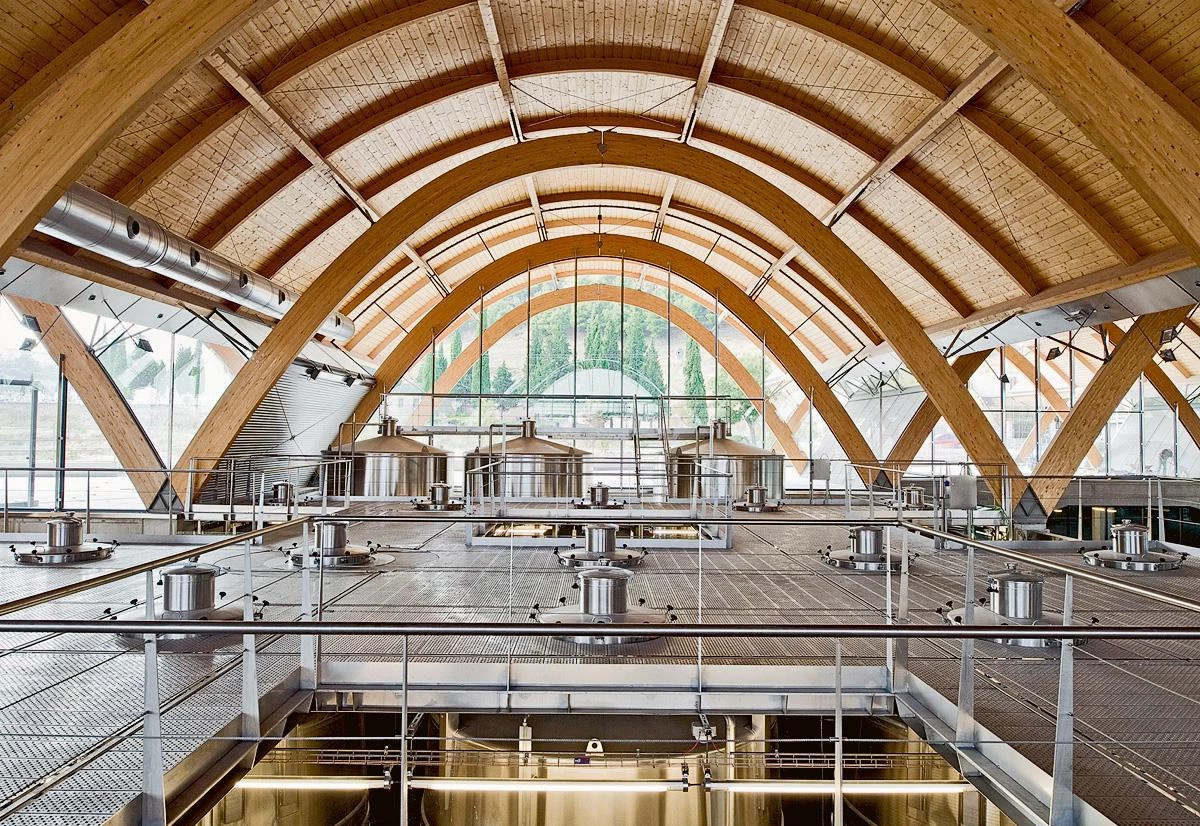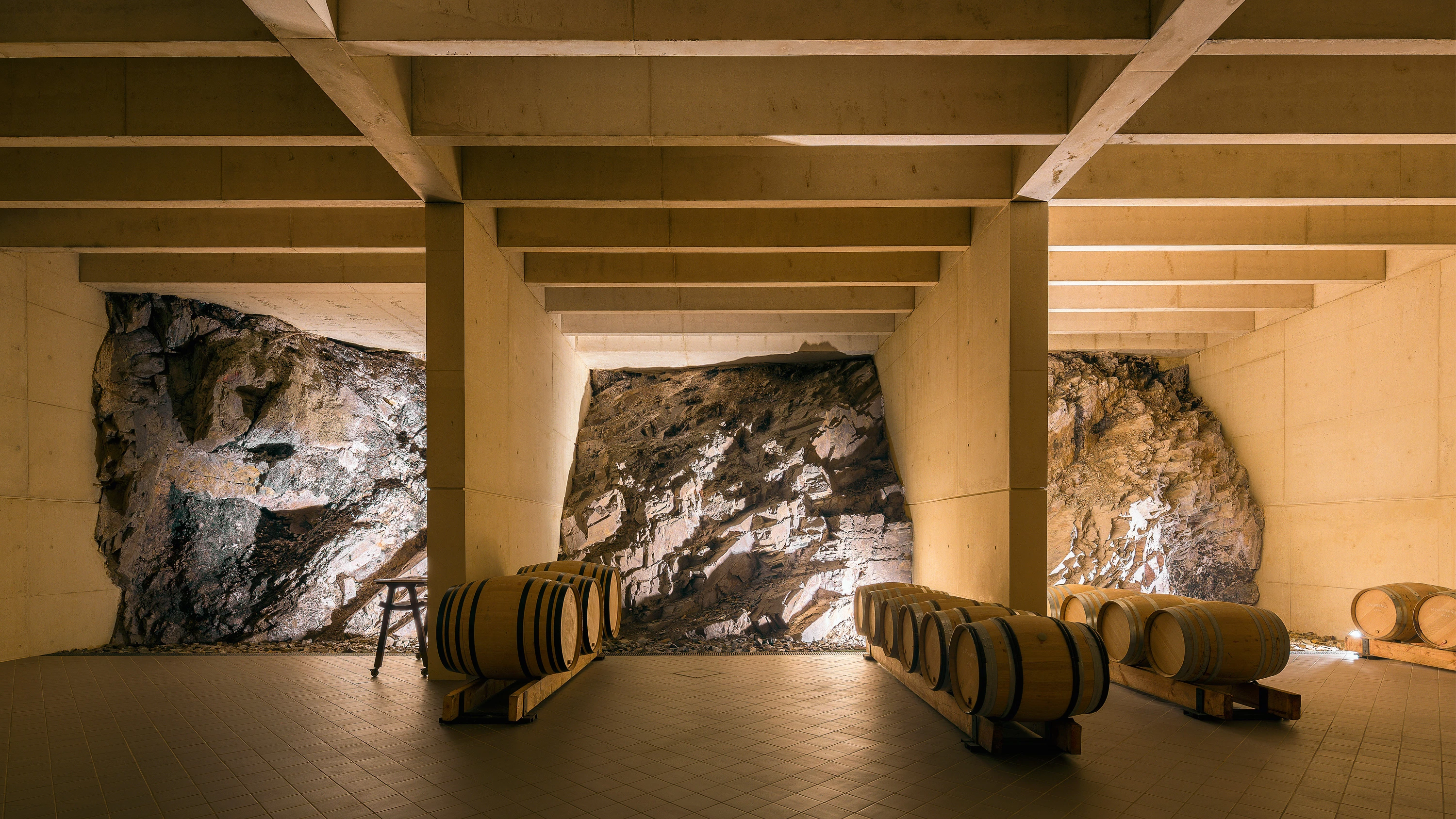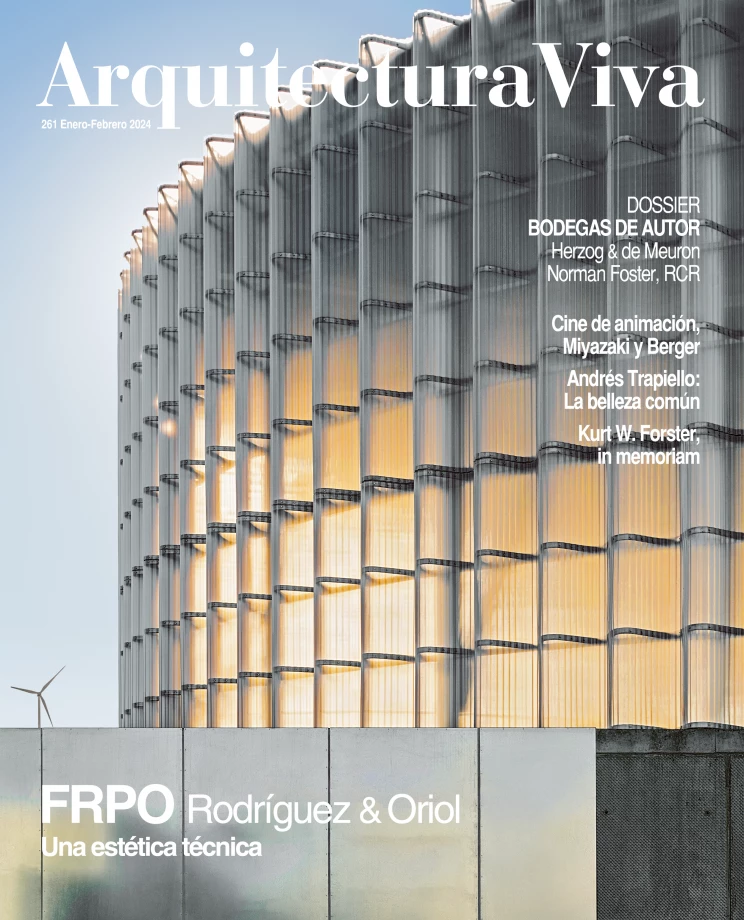Local Breeding
Three Wineries, from France to Spain

Rafael Moneo, Descendientes de J. Palacios Winery, Corullón (Spain)
Ever since people began to live in cities, conserving surplus food – whether as grain or as wine – has been one of the fundamental tasks of society, and this is likely to turn wineries – overriding the snobberies that nowadays want to make them sophisticated aesthetic products – into the most ancient and necessary pieces of architecture.
As long as winemaking as an activity remained local and depended on modest but intensive farming, wineries were more or less modest, barely deviating from the mold of popular, vernacular construction. In accordance with the owner’s degree of affluence, the climate, and the technology available, a winery could be large or small, carved underground or inserted into the heart of another building, and built in one way or another, but it always took on a minor tone, like an accessory, at the service of a given manner of transforming the landscape and therefore intimately bound to it.
The creation of the first capitalist industries in the mid-19th century upended this model: wineries became bigger as land was concentrated in the hands of ever fewer proprietors, and also became more artistic – or more ostentatious, in a clear endeavor to create brand images, something which had not existed before. The process took place in very different ways: while sometimes the brand was from the very start tied to the location, at other times it materialized in the form of Venturian clichés like barrels and casks, without dissociating itself from the corporate image of a modern factory, with its industrial constructions of sheet-metal and its wine tanks of stainless steel.
It was in this varied context, and when wine definitively proved to be an excellent business, that winemakers also began to seek the signatures of famous architects, on the assumption, perhaps by erroneous extrapolation of the ‘Guggenheim effect,’ that this strategy of aesthetic advertising would attract the new and growing clientele of what we have come to know as wine tourism.
While definitely belonging to the category of ‘auteur wineries,’ the three works featured in this dossier have the virtue of leaving authorship muted and paying earnest attention to the material culture and the memory of the landscape around them. While the Bélair-Monange Winery in Saint-Émilion, designed by Herzog & de Meuron in the enological cradle that Bordeaux is, addresses the scale and the image of the environs through restrained screenprinted forms, the new Le Dôme by Foster+Partners, also in Saint-Émilion, fuses the symbolism of the centralized floor plan and the high-tech wood with the sober look of traditional tiled roofs. For its part, the Bodega Perelada in Perelada (Girona) by RCR Arquitectes derives its striking half-buried volume from an extraordinary reading of the surrounding landscape.

Rogers Stirk Harbour + Partners and Alonso Balaguer Arquitectos, Bodegas Protos, Peñafiel (Spain)






